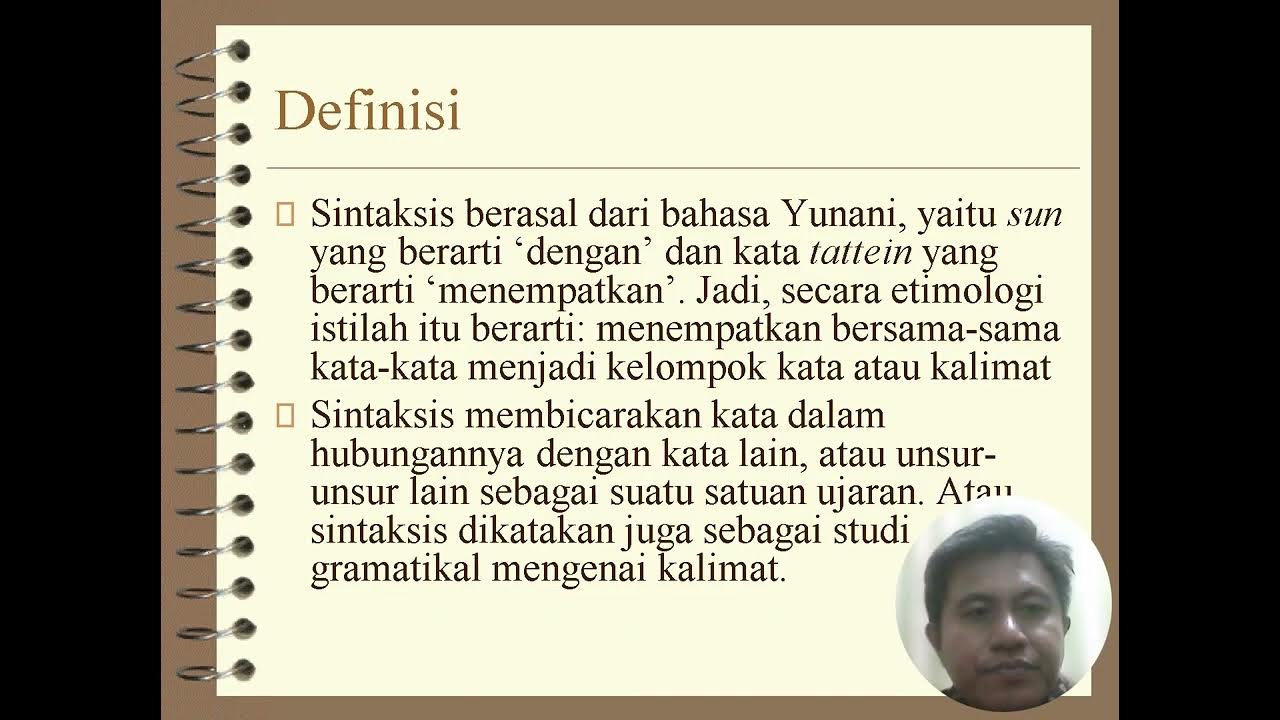#8 Morphological Models in NLP|| Functional-based Morphology || NLP ||
Summary
TLDRIn this video, the speaker explains functional-based morphology, focusing on how individual morphs (smallest meaningful units) contribute to word formation and the overall grammatical structure of sentences. Unlike unification-based morphology, which simply analyzes how words are formed by combining elements, functional-based morphology examines the role of each morph in shaping the tense and structure of a sentence. Using the example of the word 'walk,' the video demonstrates how understanding morphs helps identify tenses like present, past, or future, highlighting the importance of morphs in grammatical analysis.
Takeaways
- 😀 Unification-based morphology focuses on how words are formed by combining smaller units (morphs).
- 😀 In unification-based morphology, the primary analysis involves understanding how specific morphs combine to create new words.
- 😀 Functional-based morphology shifts focus to the role of individual morphs in forming a word and their contribution to the grammatical structure of a sentence.
- 😀 Functional-based morphology analyzes how important a particular morph is in word formation.
- 😀 In functional-based morphology, the role of words in sentences is analyzed to determine grammatical structure.
- 😀 The speaker uses 'walk' as an example to explain how tense is determined through word analysis.
- 😀 By analyzing the morphs in a word, functional-based morphology helps identify the tense (past, present, or future) of a sentence.
- 😀 Functional-based morphology emphasizes the role of specific words in defining the grammatical category of a sentence.
- 😀 The analysis in functional-based morphology helps in understanding the overall meaning and grammatical correctness of a sentence.
- 😀 The speaker encourages viewers to ask questions in the comments and subscribe to the channel for more content.
Q & A
What is functional-based morphology?
-Functional-based morphology is the study of how individual morphemes (the smallest units of meaning) contribute to the formation of a word and its role in the overall grammatical structure of a sentence.
How does functional-based morphology differ from unification-based morphology?
-In unification-based morphology, the focus is on how words are formed by combining particular words, while in functional-based morphology, the focus is on how individual morphs contribute to word formation and their role in sentence structure.
What is a morpheme?
-A morpheme is the smallest meaningful unit of a word.
Can you give an example to explain functional-based morphology?
-Sure! If you take the word 'walk', functional-based morphology would analyze how different forms of the word (like 'walked' or 'walking') affect the tense of the sentence and how these morphemes play a role in conveying the grammatical meaning of the sentence.
How does functional-based morphology help determine the tense of a sentence?
-Functional-based morphology analyzes the morphs within a word (like 'walk' or 'walked') to determine whether the sentence is in the past, present, or future tense, based on the morphological structure of the word.
Why is analyzing morphs important in functional-based morphology?
-Analyzing morphs is crucial because it helps us understand how individual units of meaning contribute to word formation and how they affect the grammatical structure of the sentence, such as determining tenses or other grammatical aspects.
What role does functional-based morphology play in understanding grammatical structures?
-Functional-based morphology helps in understanding how each morph contributes to the overall grammatical structure of a sentence, including how different forms of a word (like tense, number, or case) affect the meaning and structure of a sentence.
How does functional-based morphology analyze the importance of a particular morph?
-Functional-based morphology looks at how a specific morph within a word contributes to its meaning and its role in constructing the grammatical structure of the sentence, determining how it helps convey tense, aspect, or other grammatical features.
What example did the speaker use to explain functional-based morphology?
-The speaker used the verb 'walk' as an example, explaining how different forms of the verb (such as 'walked' for past tense or 'walking' for present continuous) are analyzed in functional-based morphology to determine the tense of the sentence.
What is the purpose of the call to action in the video?
-The speaker encourages viewers to comment with any questions they might have and to subscribe to the channel if they like the content, aiming to engage the audience and grow the channel's following.
Outlines

This section is available to paid users only. Please upgrade to access this part.
Upgrade NowMindmap

This section is available to paid users only. Please upgrade to access this part.
Upgrade NowKeywords

This section is available to paid users only. Please upgrade to access this part.
Upgrade NowHighlights

This section is available to paid users only. Please upgrade to access this part.
Upgrade NowTranscripts

This section is available to paid users only. Please upgrade to access this part.
Upgrade Now5.0 / 5 (0 votes)





